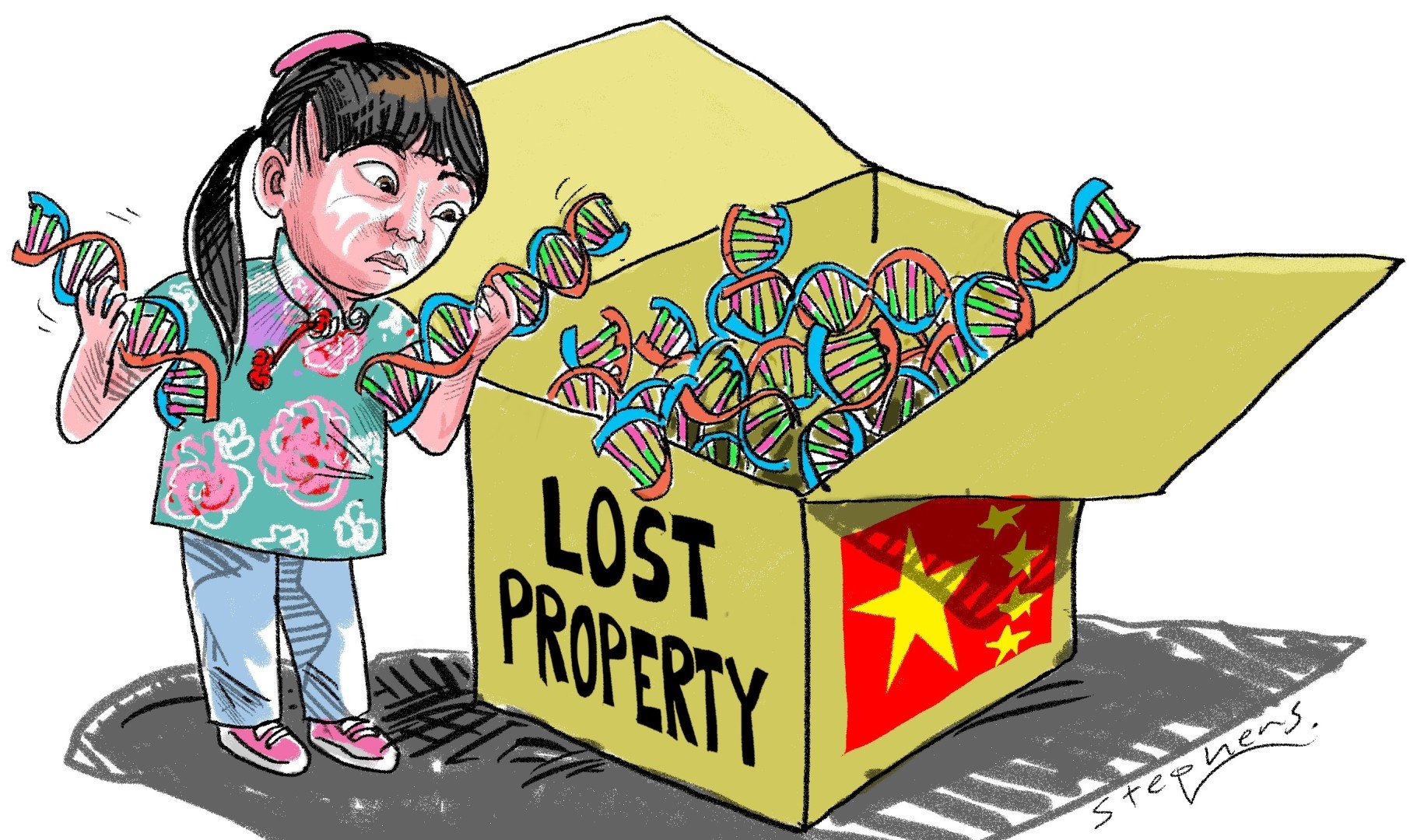
Last year, I took a class on social work practice with children and families. One of the final assignments during the semester was to create a presentation of either a skillshare or a toolbox that social workers could use for working with certain populations. I presented on working with adoptees in middle childhood and their adoptive families and highlighted three interventions in my toolbox, two of which I have previously written about in blog posts.
- Balancing Feelings with Adoption Jenga
- Using Bibliotherapy to Discuss Adoption Themes
- The Box of Lost Things
The Box of Lost Things was an idea I developed after seeing this cartoon by Craig Stephens that originally accompanied a South China Morning Post article titled, China’s one-child policy left countless children bereft. It can help to ease the pain of loss. The society in which we live oftentimes promotes a culture of toxic positivity around adoption in which adoptees’ losses and grief are dismissed in favor of all of the gains associated with adoption. The Box of Lost Things activity allows adoptees and their caregivers to process all of the things that have been lost through adoption and validate those real feelings, as well.
Recently, in a Training for Adoption Competency program, I learned that therapist, Debbie Riley, already uses a “loss box” as a ritual for adoptees to acknowledge their losses. While it was initially disappointing that my idea wasn’t unique, this information validates that my clinical brain was working! Below, I’ve shared two variations of this activity, one to do with adoptees and one to do with their caregivers, with questions I created to generate a discussion afterward.
Activity: The Box of Lost Things
Goal: To facilitate a greater understanding of the inherent losses associated with adoption, acknowledge the feelings of grief and burden of not knowing so much, and normalize complicated emotions around adoption. JaeRan Kim suggests this box also serves as a controlled vehicle for adoptees to revisit their losses in the future.
Age group: Middle childhood – adult
Directions for working with an Adoptee: Bring an empty cardboard box, and fill it with all of the things that you have lost through adoption. You can write words on pieces of paper, draw or cut out pictures, or put physical objects (Maybe a Chinese dictionary to show losing Chinese language) that represent different losses in your box. Think of as many important things as you can. Ask the adoptee to share the items in their box with you (or the group), and if they feel comfortable, the adoptee can share the contents of their box with their parents, too.
It may be useful to explain that the things that were once a part of us don’t disappear just because we don’t see those things anymore. Sometimes it feels like those things are no longer a part of us, and instead inside a box that we carry with us at all times. The top of the box can be opened or closed. When the box is closed, we might even forget what is inside of our box, but all of a sudden something might remind us of one or many of the lost things in our box, and the whole box can be opened again. It can be really heavy to carry this box by yourself, but some people like your parents or teacher can help you carry the box.
Note: Every adoptee’s box is different in size and shape and the contents inside. There are some things that might be the same for a number of adoptees and some that might be unique to your box, and all of the things inside this box are important.
Questions to Ask Adoptees:
If someone gave you a box containing everything you’ve ever lost, what would be the first thing you look for?
What does it feel like to look inside this box of things?
What does it feel like when the top of the box is taped up really tightly and you can’t see what’s inside?
What does it feel like when the wind unexpectedly blows the box open?
What are things you can do to find some of the things in your box?
How might you explain what it feels like to carry this box to someone who doesn’t know you have a box?
Who is someone who can help you carry your box?
Some things that might be in your box:
- Feeling of safety
- Biological parents and family
- Siblings
- First language
- First culture
- Religion
- First nationality
- First citizenship
- Favorite food
- First name
- Orphanage caregiver
- Foster mother
- Friends at orphanage
- Community
- Medical information
- Racial Mirrors
- Identity
- Innocence
- School or favorite schoolteacher
Directions for Working with an Adoptive Parent, Pre-Adoptive Parent, or Teacher/Caregiver to an Adoptee:
Bring an empty cardboard box and fill it with all of the things that your child has lost through adoption. You can write words on pieces of paper, draw or cut out pictures, or put physical objects (Maybe a Chinese dictionary for losing Chinese language) that represent different losses in your box. Think of as many important things as you can. Share the items in the box with the social worker (or the group).
Questions to ask:
If someone gave you a box, similar to this, containing everything you’ve ever lost, what would be the first thing you look for?
What does it feel like to look inside this box of lost things?
How might all of these lost things be a part of your child still?
What do you think it feels like for your child to carry this box around with them?
What are things you can do to help your child find some of the things in their box?







